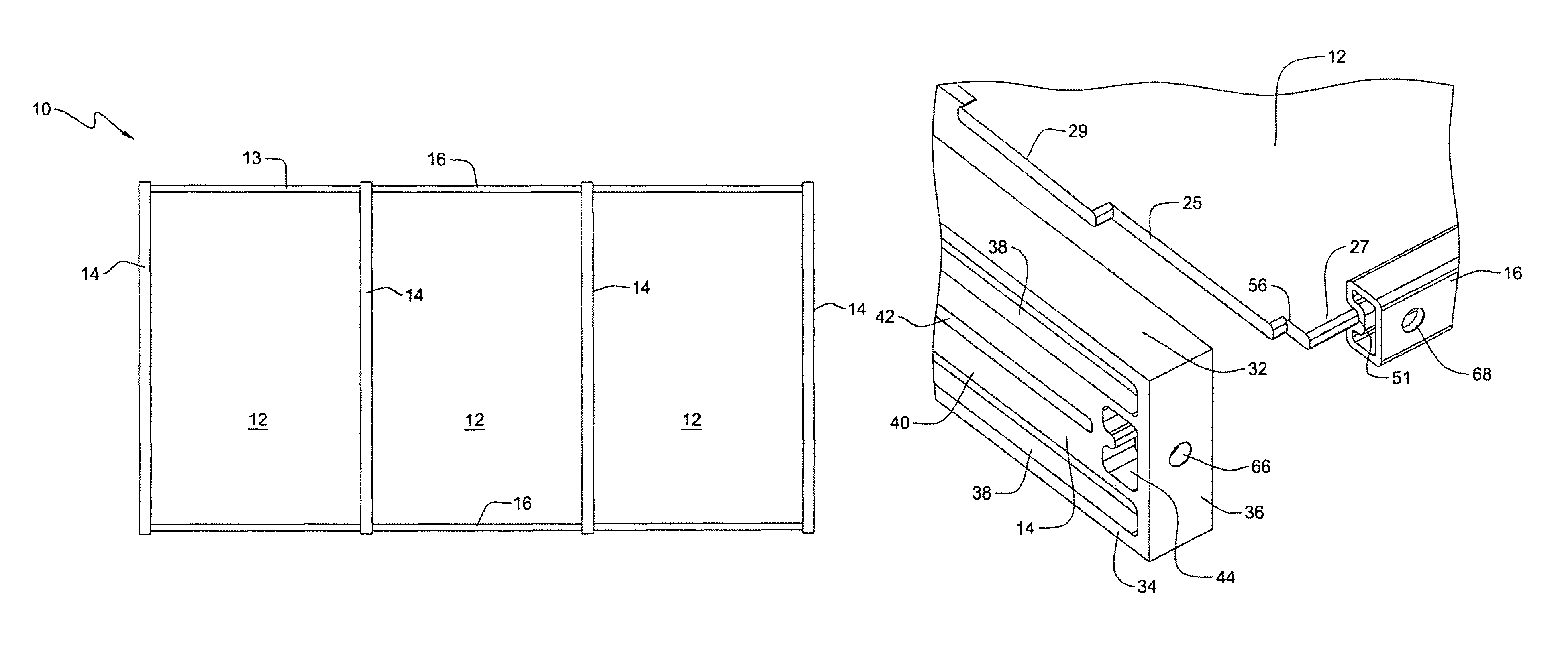Drying tray and method of use
a technology of drying tray and trays, which is applied in the field of trays, can solve the problems of loss of even and consistent dehydration quality, unsatisfactory sealing of the outer surface of the product, and lack of uniformity of the environment to which the product is exposed,
- Summary
- Abstract
- Description
- Claims
- Application Information
AI Technical Summary
Benefits of technology
Problems solved by technology
Method used
Image
Examples
Embodiment Construction
[0041]FIG. 1 is a plan view of a produce drying tray 10 according to one aspect of the invention. Though tray 10 may be used for a broad range of applications, including for transport, storage, or other handling of miscellaneous articles, according to one aspect of the invention, tray 10 may be used to retain produce, for example, fruits and vegetables, while the produce is dried, for example, in the production of dried fruits, such as prunes, or dried vegetable, such as, sun-dried tomatoes.
[0042]According to aspects of the present invention, tray 10 comprises one or more panel sections, deck panels, or panels 12 and a support frame 13 adapted to support the panels 12. Frame 13 comprises a plurality of lateral support members 14 and a plurality of longitudinal support members 16, for example, elongated support members. Though in one aspect of the invention, frame 13 may be provided as an assembly of inter-engaging members 14 and 16, in one aspect, frame 13 may be provided as a subst...
PUM
 Login to View More
Login to View More Abstract
Description
Claims
Application Information
 Login to View More
Login to View More - R&D
- Intellectual Property
- Life Sciences
- Materials
- Tech Scout
- Unparalleled Data Quality
- Higher Quality Content
- 60% Fewer Hallucinations
Browse by: Latest US Patents, China's latest patents, Technical Efficacy Thesaurus, Application Domain, Technology Topic, Popular Technical Reports.
© 2025 PatSnap. All rights reserved.Legal|Privacy policy|Modern Slavery Act Transparency Statement|Sitemap|About US| Contact US: help@patsnap.com



